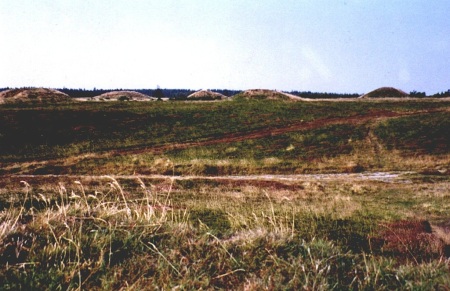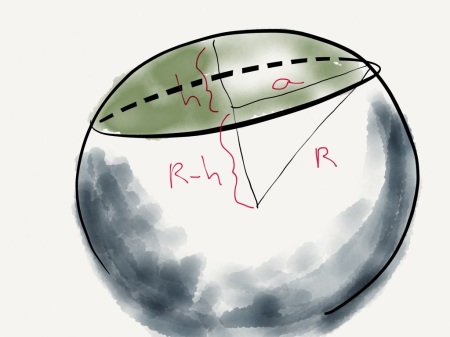This post introduces an approach for evaluating the original size of round burial mounds. In one of the places where I’ve worked, burial mounds comprise a prominent feature of the landscape, as illustrated in the following photograph.
This prominence may be amenable to explanation through formal high-level theory. Mound size, for example, may reflect the labor used to produce it, suggesting something about the size and organizational capabilities of the group that produced the mound. In order to use this feature of the monuments to evaluate high-level theory, the modern size should be an accurate reflection of the original size.
Such monuments may erode over time, making them less conspicuous and also less reliable as an index of the characteristics of the group that produced them. Natural weathering may take its toll, but modern agricultural practices probably affected burial mounds to a greater extent. Burials mounds were sometimes plowed repeatedly. These modern practices came later to the region where my case study is located, by which time laws protecting them had been enacted. Nevertheless, various processes leveled many mounds, perhaps decreasing their height and increasing their diameter. Despite these depredations, the original volume of the mounds may be preserved.
Mound shape can be modeled as a spherical cap, a geometric form representing the portion of a sphere above its intersection with a plane. Spherical caps are thus dome-shaped. The following figure illustrates a spherical cap. In the figure, h is the height of the dome, a is the radius of the dome’s base, and R is the radius of the sphere.
The total volume of a spherical cap depends on the maximum dome height, h, and on the radius of the circle where the plane intersects with the plane, a. The formula for the volume, V, of a spherical cap is:
Importantly, the calculation of the volume of a spherical cap does not depend on the radius of the sphere of which it is a part. The maximum possible original height of a mound, however, should be equal to the radius of that sphere. This height can be calculated by holding the volume constant and finding this value of the height and radius. At that point, the height and radius will be equal. Subsequent posts will explore these ideas further and play with some data on mound size.
© Scott Pletka and Mathematical Tools, Archaeological Problems, 2013.


